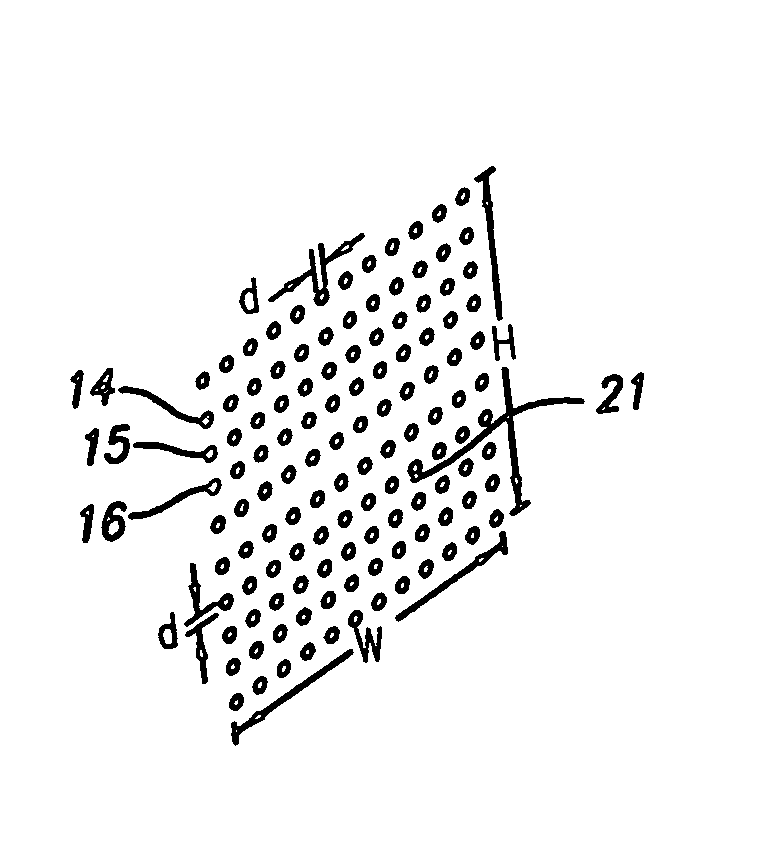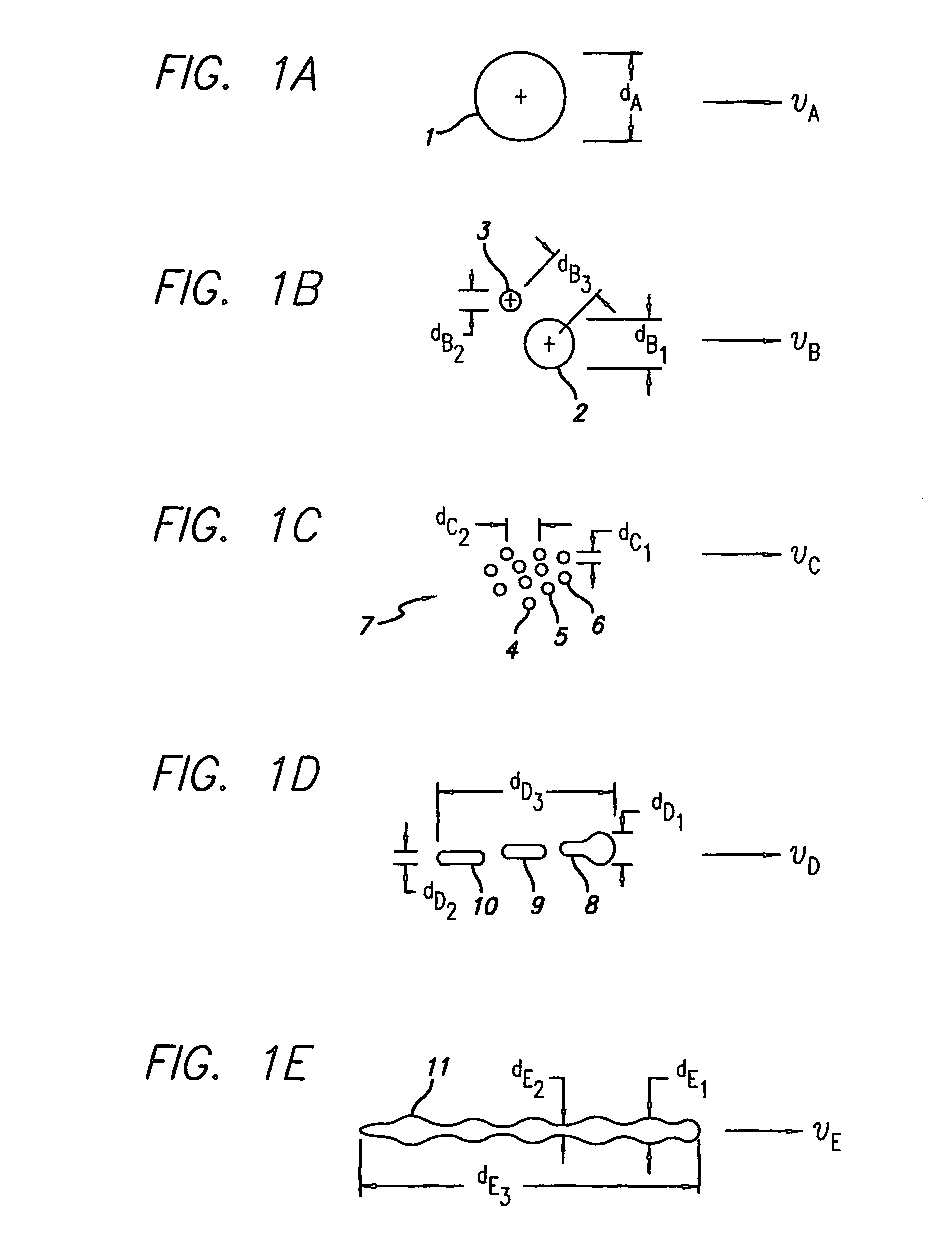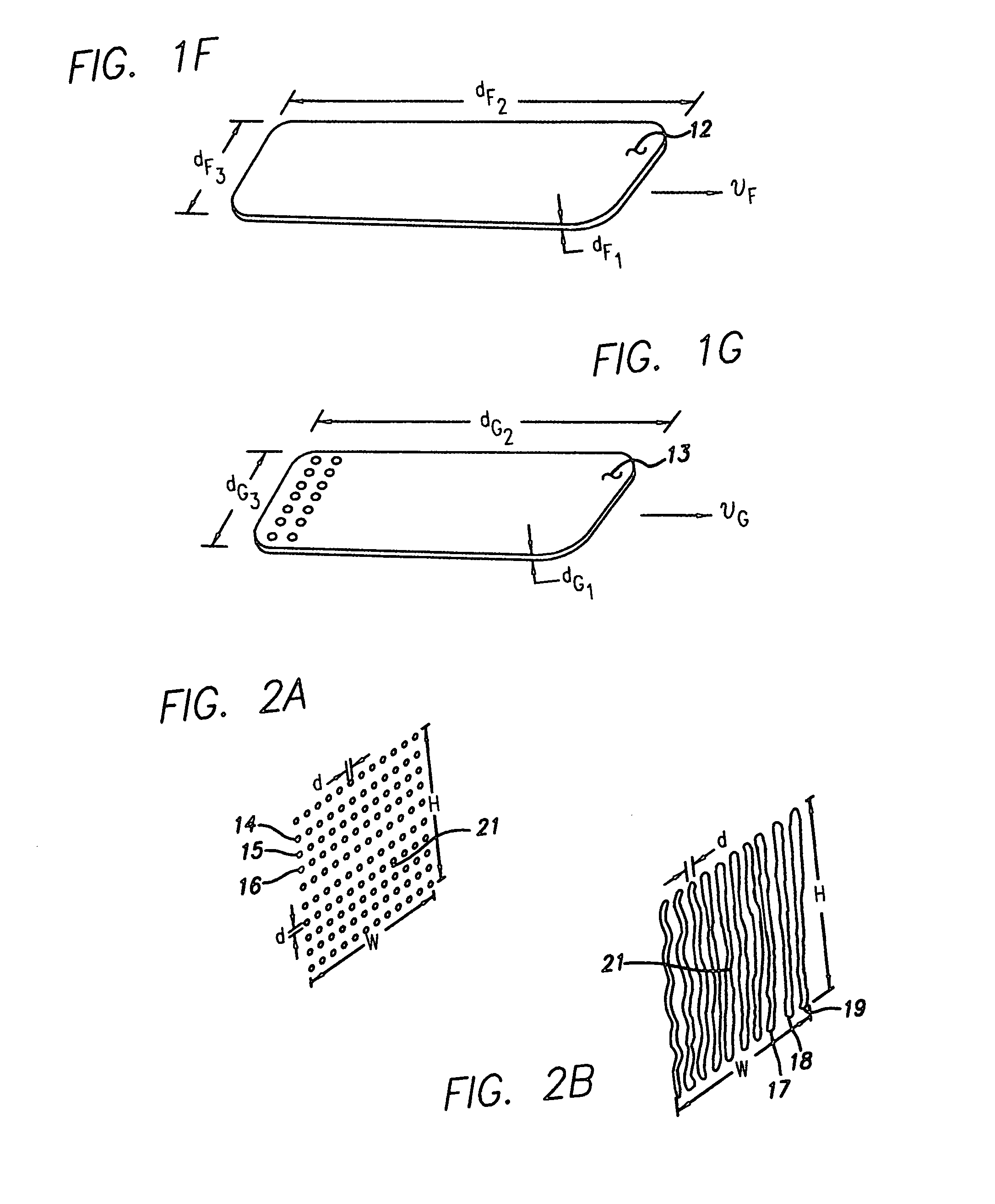Microdroplet-based 3-D volumetric displays utilizing emitted and moving droplet projection screens
a technology of projection screen and droplet, applied in the field of volumetric three-dimensional graphical or computer display, can solve the problems of not always fitting definitions or going well beyond conventional definitions
- Summary
- Abstract
- Description
- Claims
- Application Information
AI Technical Summary
Benefits of technology
Problems solved by technology
Method used
Image
Examples
first embodiment
[0132]Moving now to FIG. 1f, we see a film 12 of droplet material that has dimensions of dF2 length by dF3 width by dF1 thickness. The film 12 is moving with a velocity vF. Droplet film 12, in a first embodiment, would have a lateral dimension(s) on the order of one or more voxels and would thereby be utilized to affect the contrast of such one or more voxels. In the case of film 12 being a single voxel droplet film, the voxel is occupied with a tiny plate-like droplet whose thickness dF1 may be considerably less than a voxel dimension. So, for a single voxel application, film droplet 12 might, for example, be 75 microns long, 20 microns wide, and 2 microns thick. A film droplet 12 may be formed by pulsed emission from a slit jet. Alternatively, it could be formed by colliding separate droplets which meet or condense or wet together. Droplet 12 could also have a dimension on the order of several voxels that are all to be activated. We should mention at this point that the droplet fl...
second embodiment
[0237]In the display of FIG. 7a, we remove the (preferably) transparent cylindrical shell 95 such that there is now an open-air gap between the top section 93 and the bottom section 94. One can still maintain a relatively uniform flow across the circular cross-section by doing things such as a) having diameter D be at least as large as height H, and preferably having D being larger than H. A second measure is to maintain a slightly negative pressure for the bottom section 94 relative to the top section 93. This measure minimizes how much of the flow leaks out at an angle to the Y-axis. Also within the scope of the invention is a system having no bottom section 95 (with or without a transparent shell 95) or having a more-substantially separated bottom 94 at a larger H dimension. We stress that as long as the displayable subject matter in the form of entrained droplets such as 100 is relatively close to the top section 93 (or within a remaining shell 95), then the flow in this region,...
PUM
 Login to View More
Login to View More Abstract
Description
Claims
Application Information
 Login to View More
Login to View More - R&D
- Intellectual Property
- Life Sciences
- Materials
- Tech Scout
- Unparalleled Data Quality
- Higher Quality Content
- 60% Fewer Hallucinations
Browse by: Latest US Patents, China's latest patents, Technical Efficacy Thesaurus, Application Domain, Technology Topic, Popular Technical Reports.
© 2025 PatSnap. All rights reserved.Legal|Privacy policy|Modern Slavery Act Transparency Statement|Sitemap|About US| Contact US: help@patsnap.com



